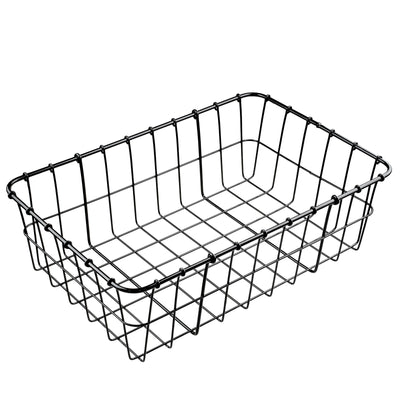Triples Are Great, Change My Mind
In the past little while, we've seen a genuine resurgence of interest in Triple Cranksets. While 1x systems dominate the cycling scene, there's a compelling case for the enduring appeal of triple setups and I thought it would be a good idea to talk triples, compatibility, and installation. Click here to watch the video!
Why Triple Cranksets? Our Triple Cranksets provide unmatched versatility for touring cyclists, offering a wide gear range to conquer diverse terrains.
Weight Advantage Contrary to common belief, our Triple Cranksets hold their own in the weight department, with the overall difference being within grams of a wide-range 1x.
Gear Range and Practicality Triple systems excel in providing a lower gear for steep inclines and offer a more seamless cadence adjustment with smaller cog gaps.
Simplicity and Effectiveness While 1x systems boast simplicity, the emphasis on constant shifting may be overstated. Many riders find themselves primarily using the middle ring, operating as a 1x system with added flexibility to adapt to different terrain.






I can’t change your mind, not would I want to, but I would like to change Shimano’s. Also, I keep seeing these great neo-retro builds using older Shimano/Suntour long-cage derailleurs… where the heck are you finding those babies? Here in the UK they’re very rare and wildly expensive. Great job too on the blog and videos. I’ll be watching. Cheers! – cm
Triple cranksets are simply not needed for riding in flatland territory but then for riding on serious hills and/or mountainous territory especially when carrying a heavy load triple cranksets are the best.
8-speed chain is about the most durable and reliable of chains and can work with 6/7/8/9-speed gear trains including their chainrings, sprockets, and F&R derailleurs but be prepared to possibly need to use non-index (friction) shifting. To note, 7/8-speed gearing can work very well and last longest.
On a 27inch / 700c rear wheel a 48/36/26T (standard) or 46/34/24T (touring) triple chainset paired with a 12/34T 8-speed cassette can produce a range of gearing about as wide and having a better selection of ratios available than a modern 1×12T or 1×13T gear train can produce and this gearing combination on 26inch wheels drops the gearing down even lower, to push the limits of what a touring / commuter bike can do. No need to take my word for it; https://www.sheldonbrown.com/gear-calc.html To note, Sheldon Brown developed an intelligent gain ratio gearing formula although measurement by gear inches was/is traditional but his gearing calculator offers both of them.
Tread: I like it narrow as possible. Also, triples were a lazy way not to optimize chainrings and cassettes to the individual, change my mind. Most doubles are wildly over geared for their user. I’ve got a 46/30 on my road bike: big ring for anything but hills and headwinds; small ring for those.
Love my triple on the road bike for the reasons stated above. I’ve found the real secret sauce is customizing your cassette to match your needs. On the MTB I like the simpler setups because it’s easier to shift to match rapidly varying terrain.
Great discussion of the 3X, but honestly I don’t miss it. In the end I mostly only used two rings, and really disliked adjusting the front derailleur to keep the 3X from chattering. I think, just my opinion, the 2X is better, but last year I discovered 1X11-speed, which reminds me of the ancient steel “English Racer 2X” style bikes I began with. Went up some wicked inclines in NYS, and early bike-packing with the 2×5-speed and never felt under-geared. As always like the blog and the vids.
Leave a comment